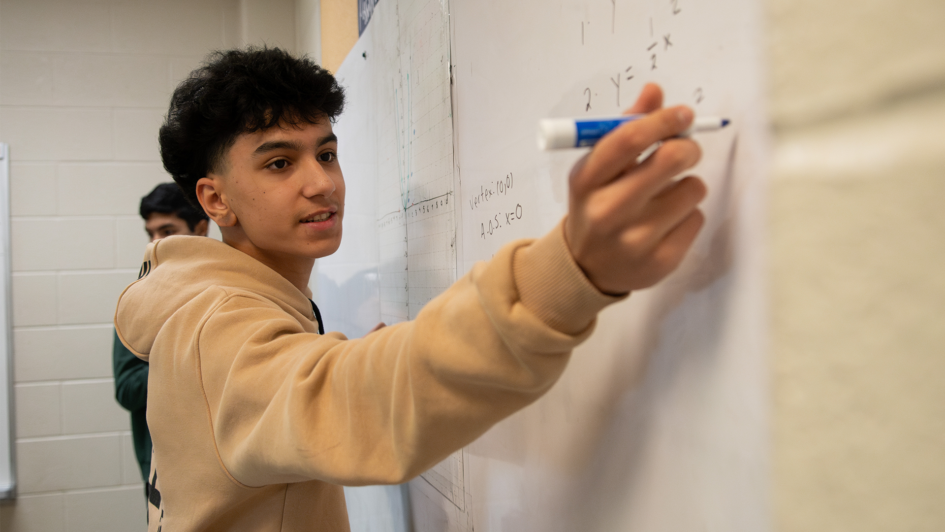
December 11th, 2023
As the clock struck 8:00 a.m. on a crisp November morning, the Grade 10 students in Angela Schaefer’s math class at Huron Heights Secondary School (HHSS) started the day with a parabolic equation or two.

Schaefer’s class is an example of the work educators across WRDSB have been doing in support of de-streaming. This is a single stream Grade 10 math class. The students in this class weren’t required to choose between an applied or academic level course in Grade 9 or 10, keeping their course options open as they look ahead to Grade 11. This means they will be able to make a more informed decision about what courses they take next year, knowing how the courses they take can support their chosen post-secondary pathway.
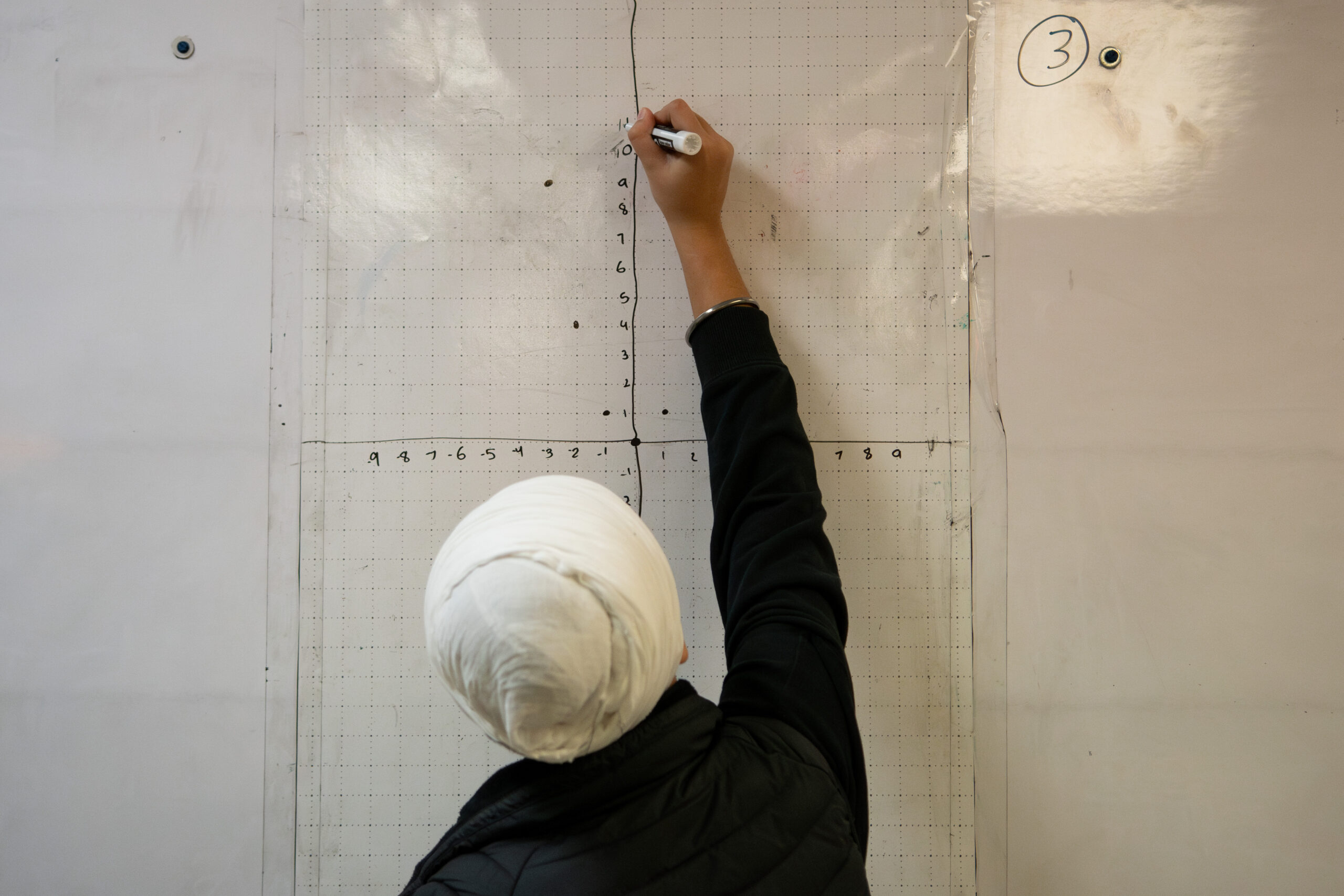
Satparkash is one of Schaefer’s students, and explained how she is already feeling more confident in her math abilities only halfway into the Grade 10 school year. She often draws out the problem to visualize it to assist with solving the equation.
“Everyone does have the potential, they just have to figure out how they learn math best,” said Satparkash.
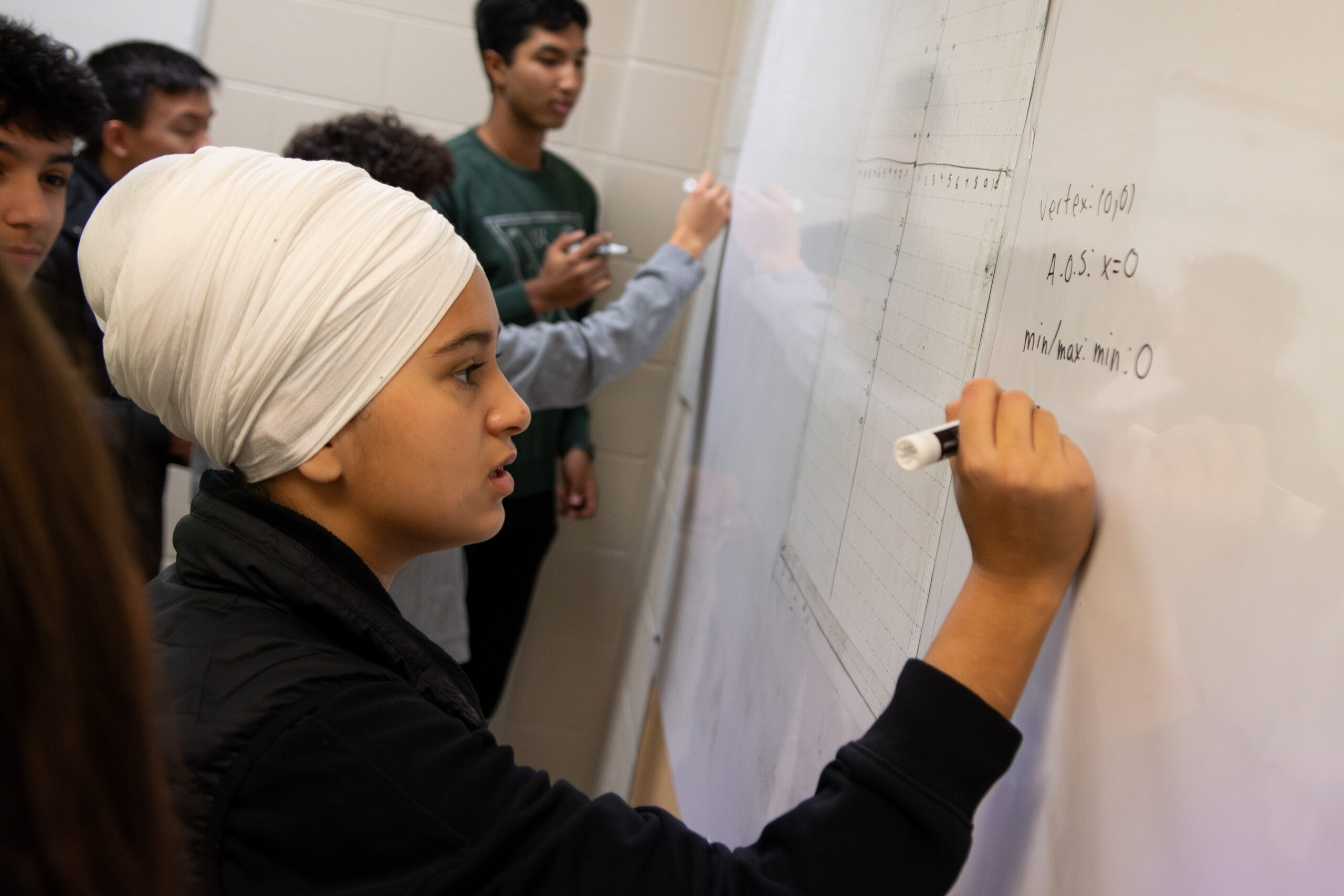
So, what’s made the difference? The “check your understanding” days, which allow students to confirm their understanding of concepts, are a game changer.
“The practice days, I like how we have those,” said Satparkash, noting they help her obtain a better understanding of the individual concepts. “Usually when you learn one topic and practice a little bit, I don’t remember it.”
Schaefer explained that the “check your understanding” days allow her to work with small groups, offering the opportunity to connect directly with each student to help them accomplish their learning goals.
“I can meet each student where they are at and move them forward,” said Schaefer.
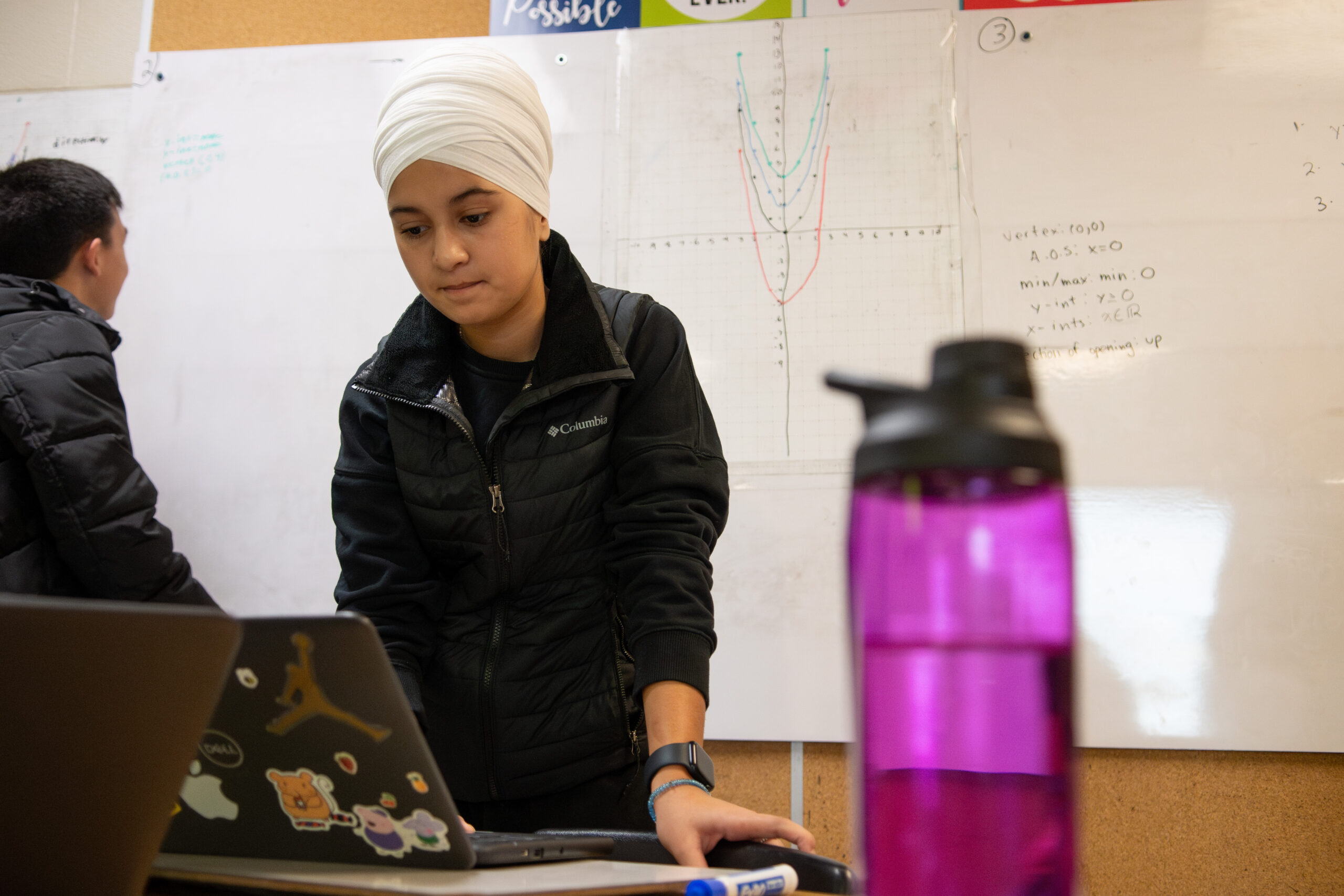
This is one of many new strategies educators across the WRDSB have access to as part of our Math Action Plan, introduced in November 2023. Schaefer is also using small, random groupings of students as one of the new tools in her educator toolkit. Each morning, students are given a random group of students to work with, allowing them to talk about what they’re learning together and support one another in problem solving. Beyond math, it’s an opportunity to build interpersonal skills and new friendships.
“They get a chance to discuss their thinking with each other, [and] clarify their thinking,” said Schaefer. “I see them relying on each other and getting to know each other, which aside from the math, is so valuable.”
The groups provide a safe space, where they are able to ask questions of each other and of the teacher, without having to do so in front of the whole class.
“They can make mistakes in small groups and it’s not as big a deal as putting up your hand in front of the class and making a mistake,” said Schaefer.
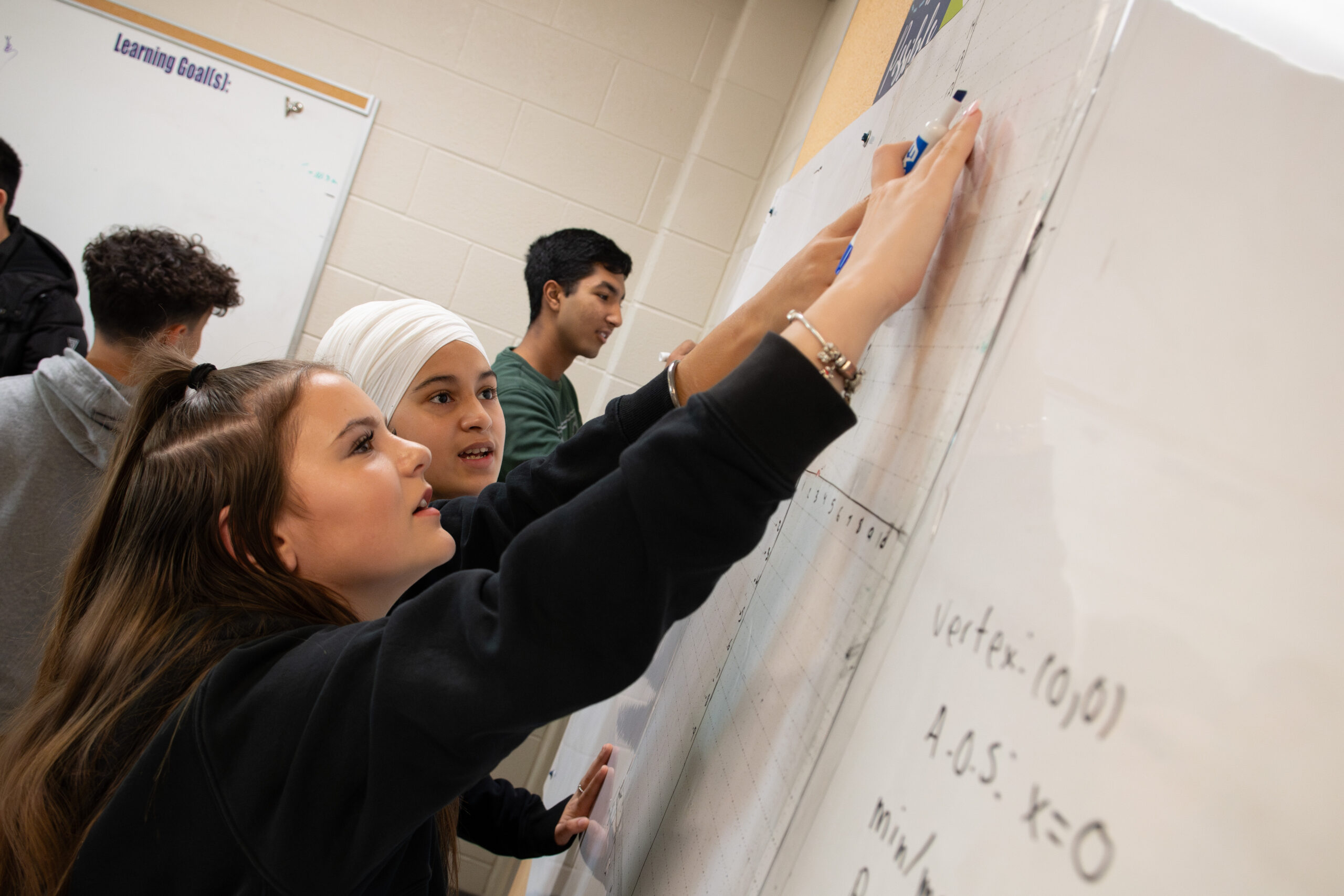
Satparkash is especially enjoying the learning experiences offered by small group instruction opportunities.
“I like how we do groups because if you get stuck other people can help you,” she said. “I also like to help other people because that helps me figure out stuff, too.”
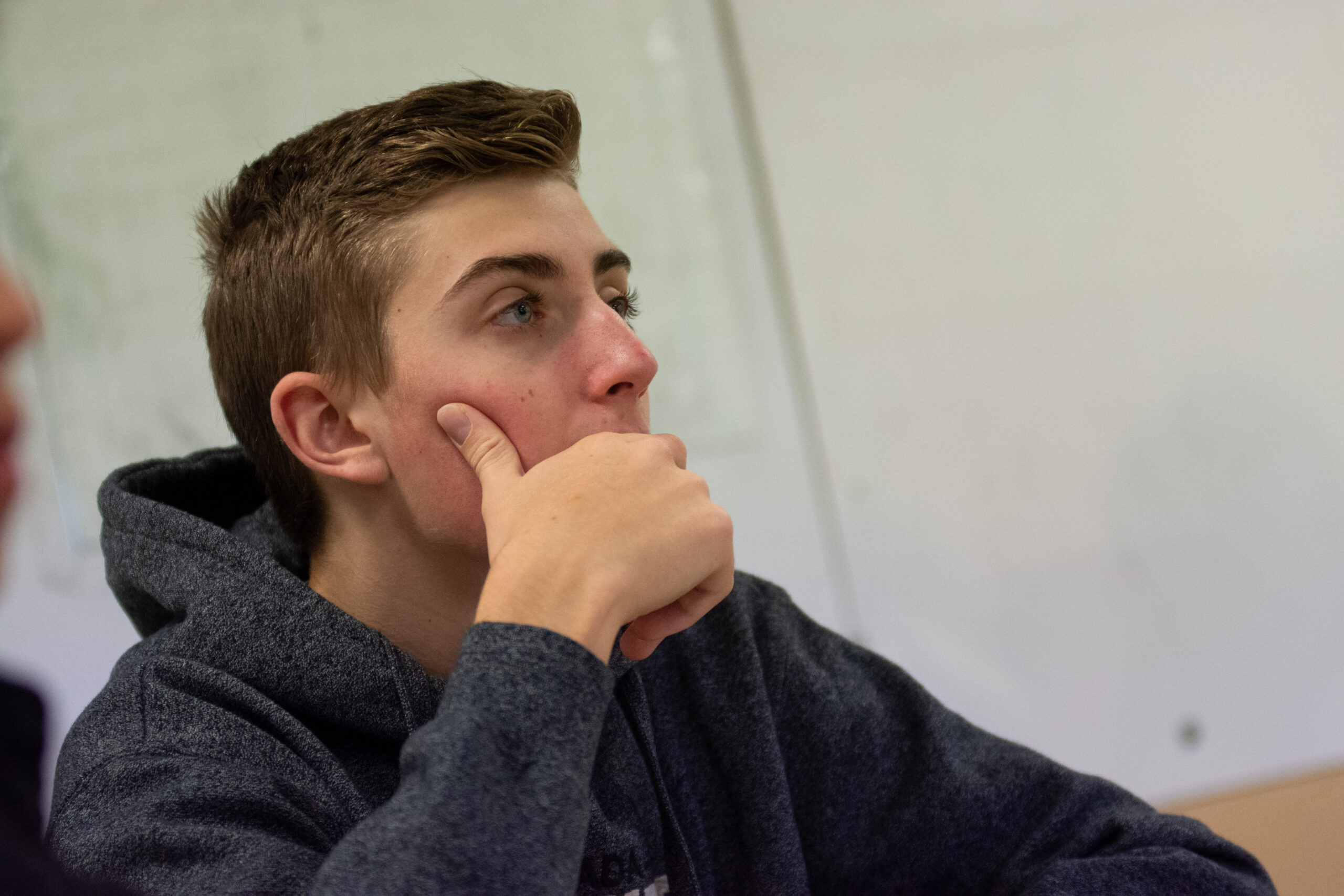
Austin is Satparkash’s classmate, and after an hour or so of learning about how to graph parabolas and their different characteristics, he shared how he’s feeling so far this school year with his understanding of math and ability to keep up with the topics taught.
“I just got my midterm grade back, I’m feeling pretty good; I like my class,” said Austin. “It all seems my pace. I’m not slowed down or sped up by anybody. I’m enjoying it.”
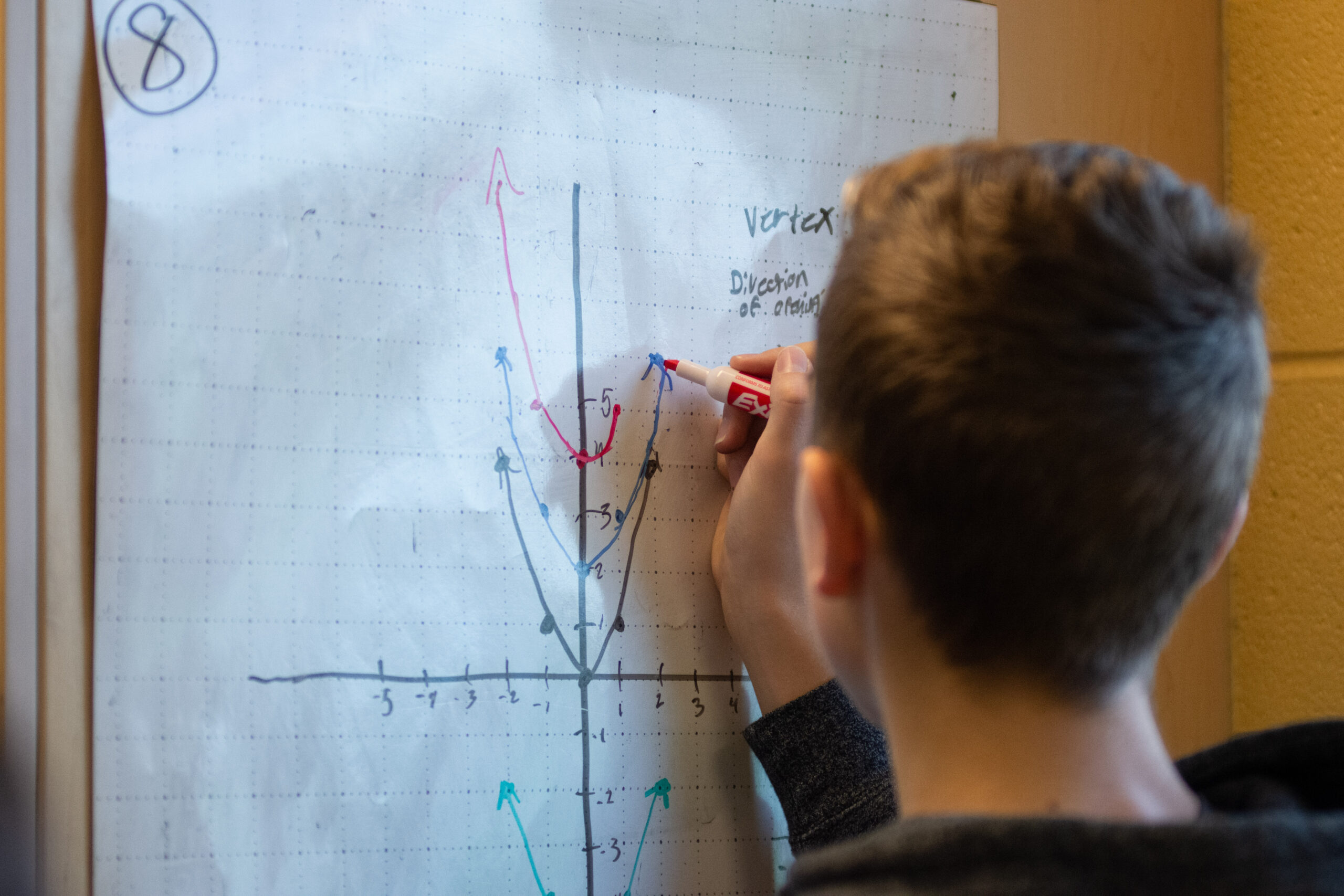
Austin enjoys how Schaefer’s approach invites students up out of their seats to engage in group-based learning using the whiteboards that surround the classroom. The chance to try out the skills he’s learned helps him to better remember them, and see how they can be used with other concepts and problems.
“I appreciate how much we do, rather than sitting at our desks and just listening,” said Austin. “I think the best way to learn math is actually doing it.”
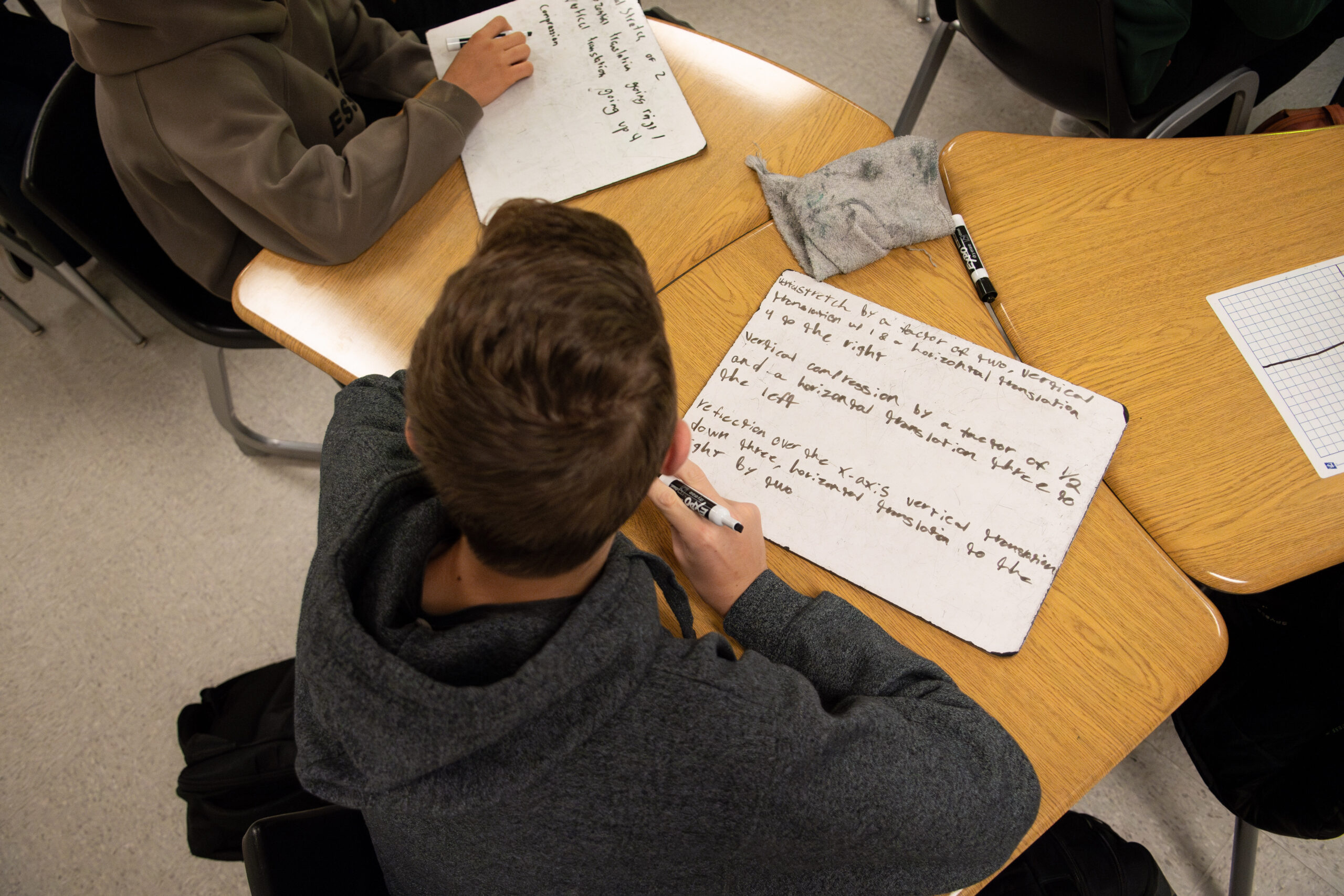
He can appreciate the difference it’s making in his abilities in math, too. Austin explained that he’s been able to gain confidence with concepts he’s struggled with in the past, such as expand and simplify. For him, the small groups and “check your understanding” days have made the difference.
“I think I definitely have improved, I feel much more confident about concepts that I learned last year,” said Austin.
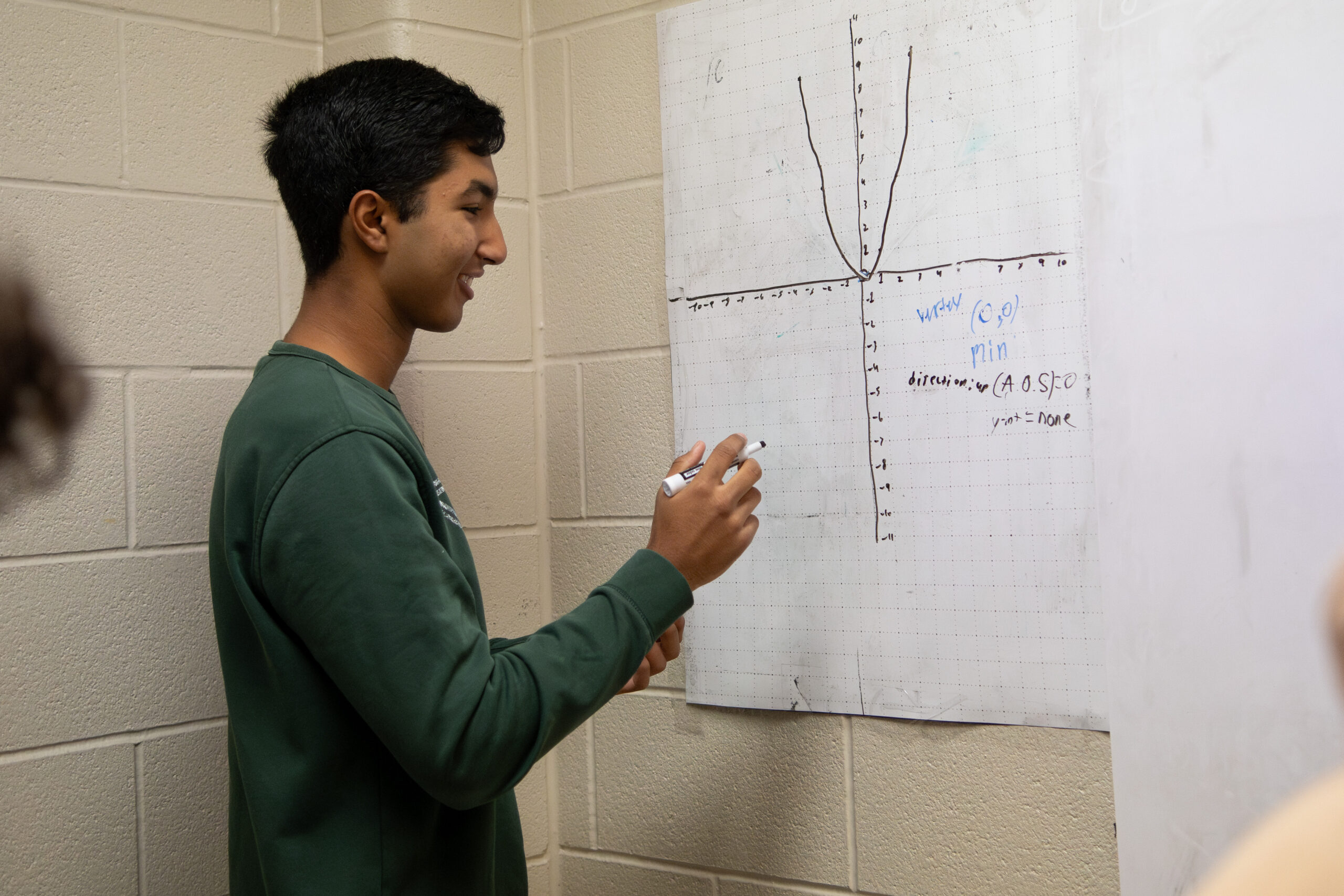
Carolyn Gingerich is a secondary consultant in the Learning Support Services department for the Waterloo Region District School Board (WRDSB). Gingerich supports educators at all WRDSB secondary schools as they implement the Math Action Plan, including de-streaming. She explained how the single stream approach in Grade 9 and 10 keeps doors open for students, allowing them to learn more about their desired post-secondary pathway before being asked to make a decision about where they’re headed after graduation.
“We are holding those high expectations of all students, and giving all students the opportunity to have access to any pathway that they would like in Grade 11,” said Gingerich. “It keeps those options open and gives students the opportunity to see what those possibilities are.”
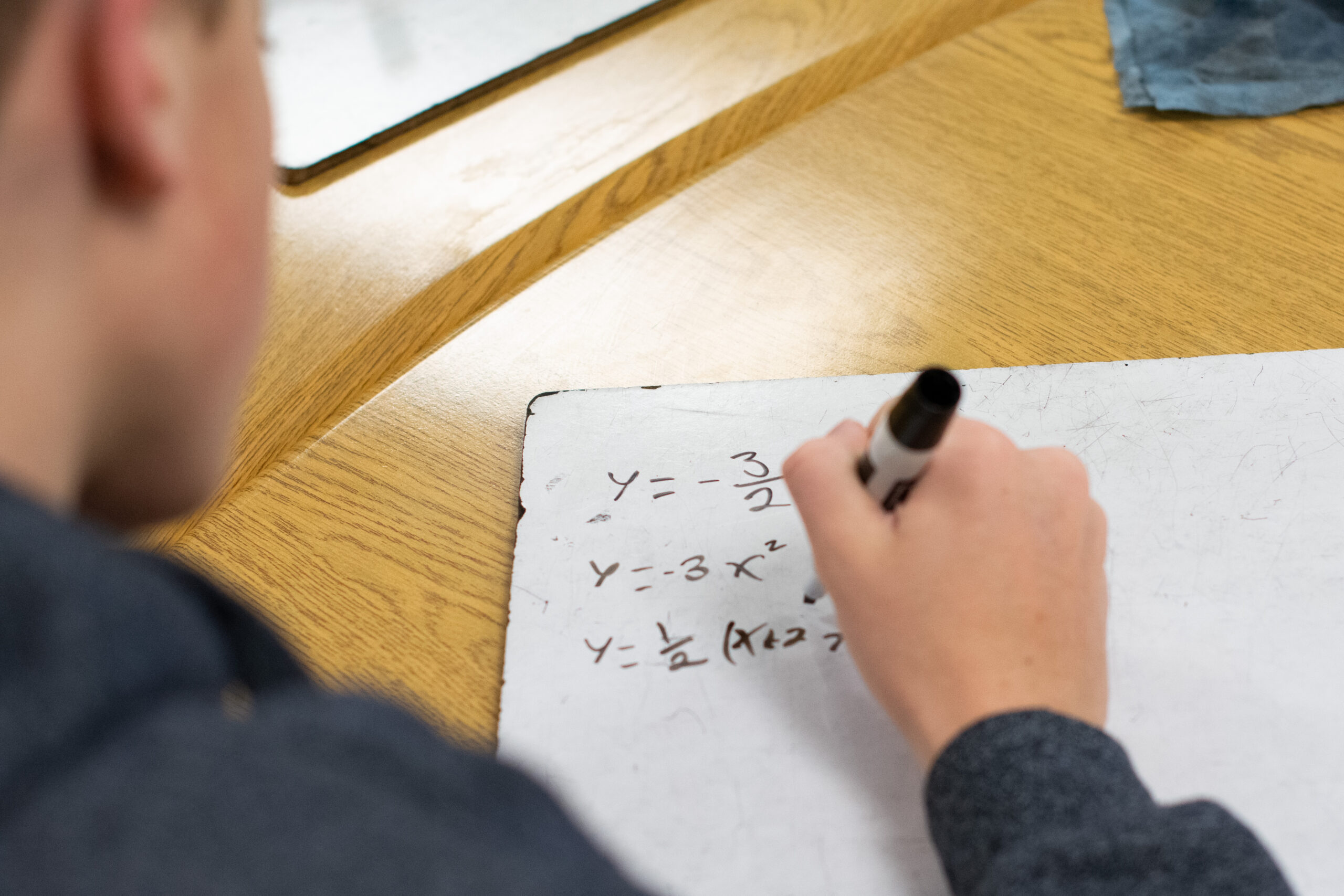
Schaefer added that fostering success for all students in a single stream classroom comes down to meeting students where they are in their learning journeys, and working together with them to take the next step in their academic growth.
“If students feel like they belong in the class, and that they can be successful, that’s going to go way further than any other strategy,” added Schaefer.
The WRDSB Math Action Plan
This story is just one in our series highlighting the work happening in classrooms across the WRDSB as part of our Math Action Plan. Stay tuned for future stories that will share how we’re building skills for students in Grade 7 and 8, and the tiered supports available in Grade 3 and 6 to support all students in feeling confident in their mathematical abilities.
This story was included as part of our 2023 WRDSB Annual Report, which provides a small snapshot of student and staff achievements over the past year.
Categories: Feature Tags: De-streaming · HHSS · Huron Heights Secondary School · math · Math Action Plan · Math Class · single stream

